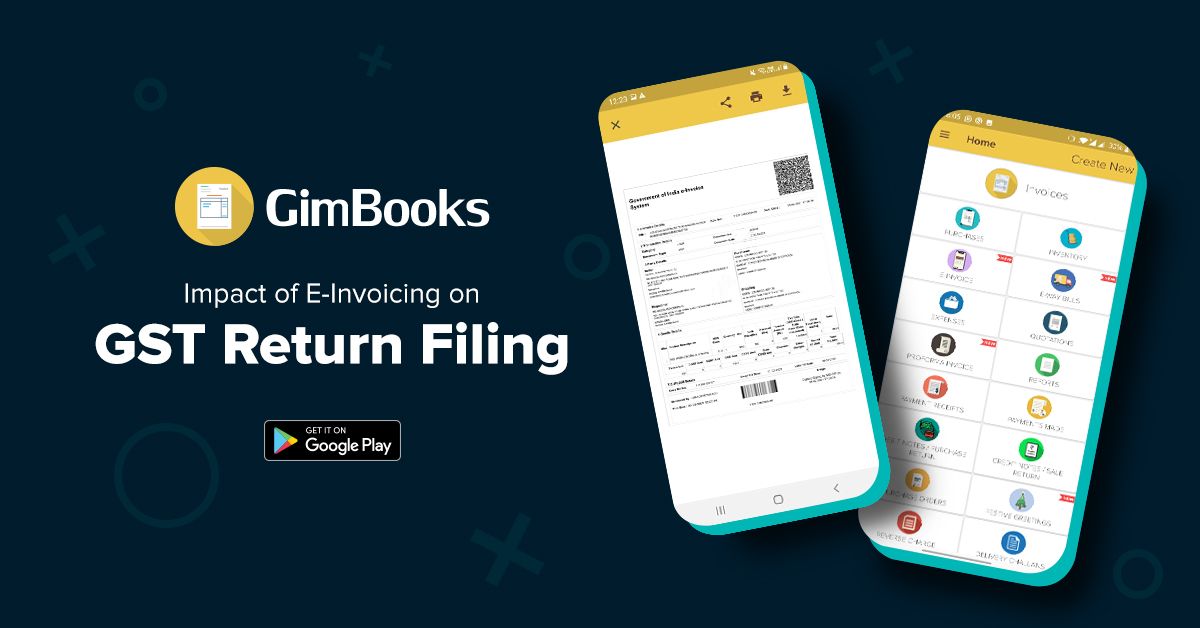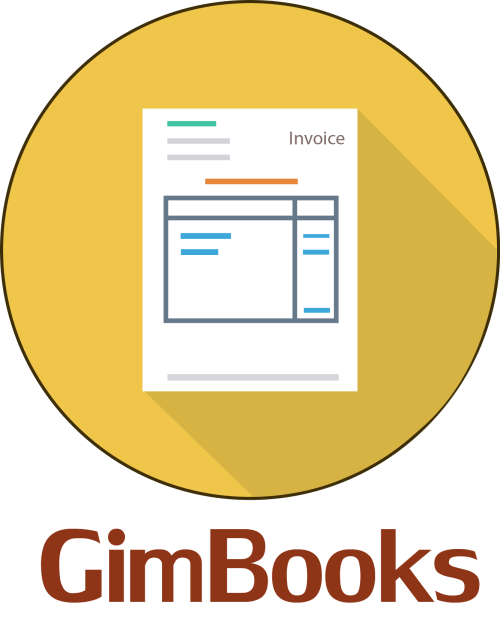Impact of E-invoicing in GST Return filing
Under the new e-invoicing system, all e-invoices will get electronically authenticated by GSTN. This article will take you through the impact of e-invoicing in GST Return Filing.

As we know that E-invoicing System currently applies to the businesses with the Annual Aggregate Turnover exceeding Rs 100 crores in any of the previous Financial years starting from 2017-18 and It shall encompass smaller businesses too with Annual Aggregate Turnover exceeding Rs 50 crores from April 1, 2021
Hence, it is important to understand the change in the compliance and also the impact on the GSTR Return filing if your business is eligible for e-invoice .
Here is a comprehensive blog giving out the details about impact of e-invoicing on GST Return filing, facilities to import e-invoice details into GSTR-1 Return, its challenges and solutions provided by GimBooks, invoice manager app.
The Goods and Service Tax Network (GSTN) has issued an advisory on Auto-population of E-invoice details into GSTR-1
Most of us know that invoice details can be imported from the e-way bill site into your GSTR-1 Return. Similarly, the invoices details can be imported from the Government portals into your GSTR-1
Since the e-invoicing system currently applies to only B2B documents such as e-invoices, credit & debit notes, only these documents will be auto-populated to the respected tables of GSTR-1 Return. Hence, once the taxpayer obtains IRN (Invoice Reference Number) from IRP (Invoice Registration Portal then only the auto population takes place.
As per the advisory dated 30 November 2020, the auto-population happens in an incremental manner on T+2 day basis
What is the benefit of this facility?
In this way, the taxpayer can avoid re-entering the details again on the GST Portal for preparing GSTR-1 as well as avoid any errors of manual entry.
Initially, this facility faced some technical glitches in the month of october. Hence, the taxpayers were advised to prepare their GSTR-1 as per the respective sales register for the month of october and november. Hence, this facility is actually made available from December 2020.
Now let's checkout the Tables of GSTR-1 where e-invoice details get auto populated.
Important Points to be noted about these facilities
Along with basic details of invoice such as bias GSTIN, GST date, quantity and so on
- ADDITIONAL DETAILS get auto-populated to GSTR-1 Return such as the
- Source,
- Invoice Reference Number (IRN) &
- Invoice Reference Number Date.
- You can update or modify details of auto-populated e-invoices in GSTR-1 if those details are not as per the actual invoice issue.
- In-case, e-invoice details are edited by the taxpayer directly in GSTR-1 then the source, IRN and IRN date fields will be reset to blank
Such edited documents are considered as separately uploaded by the taxpayer rather than auto-populated.
- Incase, you cancel the e-invoice after the auto-population of details into the GSTR-1 Return, then such details will also be deleted in the respective tables of GSTR-1
- E-invoice details can also be downloaded as an excel file or viewed on the GST portal without an option to edit.
If the GSTR-1 for the respective period was already filed by the taxpayer then the details from e-invoice can be downloaded only as an excel file.
The downloaded file will contain the details of e-invoice from the IRP along with the following additional informations
- Invoice Reference Number (IRN)
- Invoice Reference Number Date
- Invoice Status - Valid/Cancelled
- Date of auto-population or deletion
- GSTR-1 auto-population/deletion status
- Error in auto-population/deletion
From this discussion, we must understand that the taxpayers have a challenge of reconciling data between the e-invoice auto-populated into GSTR-1 as well as well as the Sales register every month.
The differences could be on the account of the B2C invoice, additional details asked for GSTR-1 apart from B2B invoices and the non appearance of invoice data in GSTR-1 for particular month.
This requires a perfect expert solution for error handling & matching of data entries such as GimBooks which provides best in class e-invoicing solution which is fast, dependable & Affordable.
Also Read,
